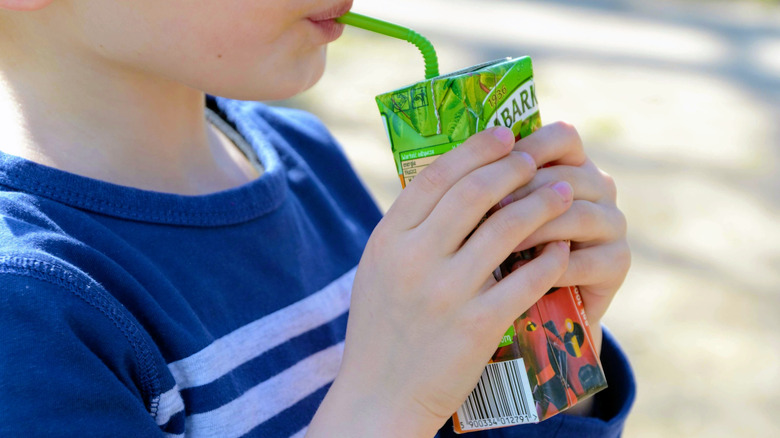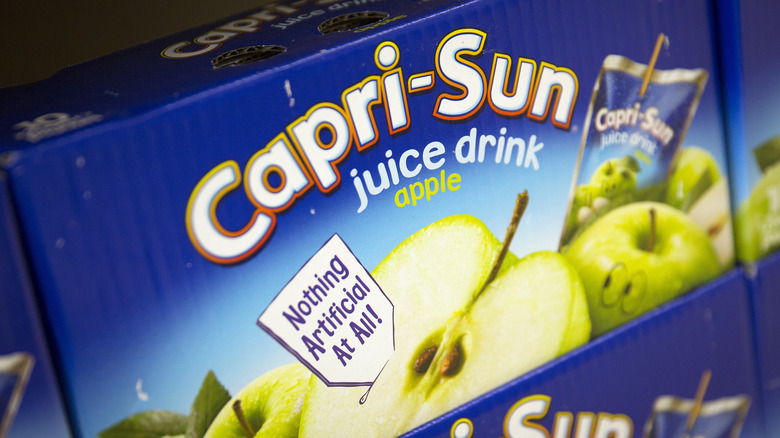The Moldy Reason To Avoid Apple Juice Boxes
While it's extremely gross and annoying to take out a piece of fruit, bread, or a chunk of cheese and discover greenish-blue or white bits on it, it's also reassuring to know that you caught it in time. You can cut the mold off your hard cheese, and throw out the forgotten leftovers that aren't edible any longer. But what about when you eat mold by accident? Those apple juice boxes kids love may be convenient, but, besides the massive amounts of sugar they contain, they're also breeding grounds for mold.
According to Children's MD, it's not uncommon to find mold in juice boxes or pouches. The reason is that even the tiniest puncture can let in air, causing mold to grow. Add to that the lack of preservatives in the portable containers, and mold grows even faster. If that wasn't enough to make you put down the apple juice box, that microscopic hole allows the juice's sugar to begin to ferment, creating an alcoholic hard cider.
In 2014, Kraft Foods changed its Capri Sun packaging so that the bottoms were clear. While Capri Sun insisted it was just to see the fruity goodness inside, many suspected it was due to reported complaints of mold found in the pouches. Juice boxes have no such clear bottom, so inside that unopened box, you could have moldy juice that's beginning to turn into alcohol, and you'd have absolutely no idea.
Pasteurization doesn't kill already-present patulin
The most common type of mold that grows in apple juice is Penicillium expansum, which can initially present itself as white, but then change to blue, green, or even black. While most people that drink moldy apple juice will end up with an upset stomach, those who have sensitive immune systems could get sicker.
According to the National Institute of Health, Penicillium expansum "invades wounded apples, causing the blue mold decay and [ensuring] the production of patulin, a mycotoxin that negatively affects human health." While the pasteurization that generally occurs when making juices will kill mold, the process will not remove already-present patulin. Due to concern over apple juice consumption, the U.S. Food and Drug Administration used studies to determine the safe level of patulin in apple juice, concluding that anything below 50 µg/kg is acceptable.
The amount of time it takes for mold to grow varies widely, but your apple juice will last the longest if it's pasteurized or contains preservatives. According to L'Academie de Cuisine, apple juice that is unrefrigerated and bottled will last the longest, and can still be used up until three months after the "best if used by" date if it still hasn't been opened. As mold thrives in moist environments and can grow in any fruit juice, it's best to adhere to guidelines and "best if used by" dates for all juices, and not just apple juice.

